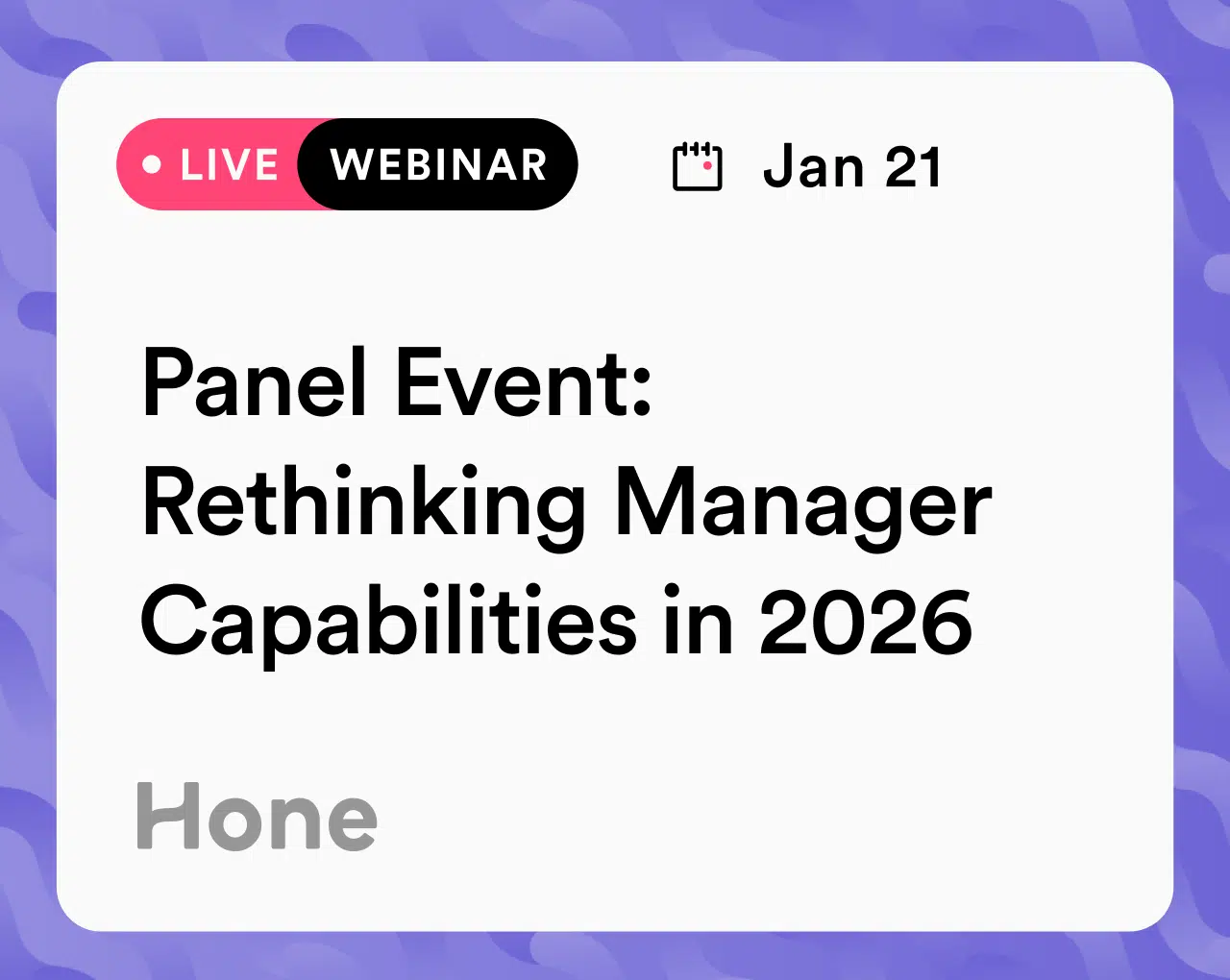We’ve all heard it before: The only constant is change. From economic instability and leadership shake-ups to debates over remote work and the rapid rise of AI, the workplace is shifting faster than ever. All this disruption can leave employees stressed, unstable, and struggling to keep up. But here’s the thing: mastering change management strategies isn’t just about surviving the chaos — it’s about turning it into an opportunity for growth.
In this article, we’ll dive into how organizations can not only manage change effectively but also leverage it to boost employee engagement and drive impressive results. So, buckle up and get ready to explore how you can transform change from a hurdle into a springboard for success.
What changes are organizations experiencing and how are they impacting employees?
One big hurdle for many businesses today is dealing with economic instability, which can vary significantly depending on the country or region in which they operate. In some areas, businesses are being forced to rethink how they manage their finances and day-to-day operations. As a result, many are implementing budget cuts, cost-saving measures, and even layoffs. These moves are understandably causing anxiety among employees and increasing their stress levels.
Leadership changes are another common area of disruption. When companies bring in new leaders or shuffle their executive teams, it often leads to shifts in company direction and strategy. This can leave employees feeling uncertain as they try to keep up with new goals and expectations. A change like this isn’t always inherently negative, but it still can shake things up quite a bit in your employees’ day to day.
The ongoing debate over remote work, hybrid models, and return-to-office (RTO) mandates is also creating confusion. Companies are trying to strike the right balance between flexibility and structure, but it hasn’t been easy. In fact, 38% of companies have changed their RTO policy 2x or more since 2020, leaving employees feeling unsettled and struggling to keep up with the changes.
On top of all this, the rapid adoption of AI technologies is transforming how work gets done. While these advancements bring exciting opportunities, they also come with challenges. Employees might feel overwhelmed by the need to learn new skills or worry about the security of their jobs as automation becomes more common.
All these changes can take a toll. Plus, research shows that most change initiatives — around 70% — don’t actually succeed, and it’s often the employees who feel the impact the most. About 73% of workers affected by change report feeling moderate to high levels of stress. Studies show that this stress is often driven by factors like mistrust in the organization, not knowing why changes are happening, and fear of the unknown. On top of that, changes in job roles and feeling left out of decision-making can make employees even more resistant to change.
Building a resilient company culture
At the heart of a strong company culture are things like a sense of belonging, meaningful contribution, community, and trusted leadership. These elements help employees feel connected and valued. But when change comes, these foundations can be shaken. Employees might start to wonder if they still fit in, if what they do still matters, or if they can continue to trust the leadership.
To build a culture that can weather these storms, it’s crucial to keep those core values front and center, even when things get tough. For example, during something as difficult as a workforce reduction, how people are treated says a lot about your company’s true values. If your culture is strong, it won’t just survive the change — it will guide how you handle it, helping employees feel that they still belong and have a future with the company.
How your organization deals with smaller challenges also plays a big role in building resilience. When things don’t go as planned — like a project failing — the way you respond sets the tone for how bigger disruptions will be managed. If employees see that the company sticks to its values even in minor setbacks, they’re more likely to trust that those values will hold up when the stakes are higher.
Company values can be a real anchor during turbulent times, but they need to be more than just nice words on a website. When they’re genuinely woven into daily operations, decision-making, and how people are recognized, they can be a powerful guide. If values are truly part of your culture, you can lean on them to explain tough decisions, making them easier for employees to understand and get behind.
Preparing managers to lead through uncertainty with effective change management strategies
Managers are key players when it comes to navigating change, and their ability to lead effectively can make a huge difference in how well employees adapt. These frontline leaders are the ones who communicate changes, address concerns, and keep morale up. But if they’re not properly prepared or supported, even the best managers can struggle to guide their teams through uncertainty.
One common pitfall is thinking that a single town hall or announcement is enough to prepare managers for what’s coming. It’s not just about telling them what’s happening — they need to be involved in the process from the start. This means making sure they fully understand why the change is happening, what it’s meant to achieve, and how they fit into the bigger picture.
“You need to very intentionally arm your people managers. They’re the people that are at the front lines of this change that are going to make or break the engagement of their teams. If you have a people manager who says, ‘I’m telling you this because I have to, I had no say in this change.’ What that does is it further disengages. It further separates the frontline employees from leadership, and it festers that mistrust,” says Rea Rotholz, Senior Director of Learning Solutions at Hone.
Middle managers, in particular, often bear the brunt of change. They’re juggling their own responsibilities while trying to help their teams navigate uncertainty. To support them, organizations should invest in ongoing training that equips managers with the skills to be strong leaders. This includes learning how to communicate clearly, handle tough conversations, and build trust with their teams.
Getting managers involved early in the planning stages of change management strategies can make a world of difference. When they feel like they have a stake in the decision-making process, they’re more likely to buy into the change and champion it within their teams.
It’s also important to make sure managers have access to support networks, including their own managers and peers. This way, they can seek advice, share ideas, and tackle challenges together. By fostering an environment where managers feel empowered and supported, companies can create a positive ripple effect that keeps employees engaged at every level.
Identifying and combating change fatigue
In times of constant change, it’s not uncommon for employees to feel overwhelmed, leading to what’s often called “change fatigue.” This happens when there’s too much change happening too fast, leaving employees exhausted and disengaged.
Change fatigue can manifest in several ways, and it’s important to be aware of the signs. Some common indicators include:
- Decreased productivity: Employees might struggle to keep up with their work, leading to a noticeable drop in output.
- Increased absenteeism: Employees may start taking more time off as they feel burned out by constant changes.
- Low morale: If employees seem disengaged, unmotivated, or openly express frustration, it could be a sign that they’re overwhelmed by the pace of change.
- Resistance to change: Increased pushback against new initiatives or reluctance to participate in change-related activities can signal fatigue.
“Stay interviews” can be a fantastic way to catch signs of change fatigue before it becomes a bigger issue. Instead of just relying on engagement surveys, these one-on-one chats let you dig into how your teams are really feeling about all the changes happening. Whether someone is thriving or struggling, getting their honest feedback can help you tackle issues early and make sure everyone feels supported as things shift around them.
If you’ve identified that change fatigue is setting in, here are some actions you can take:
Acknowledge and validate
It’s really important to remember that people are human — not robots — and it’s okay for them to have feelings at work. Big changes can stir up a lot of emotions, and it’s crucial to create a safe space where employees can express those feelings. Instead of rushing through changes and focusing solely on productivity, acknowledge how tough things are and let people take the time they need. Showing that you understand and respect their emotions helps them handle the transition better and keeps the human side of work front and center.
Maintain consistency wherever possible
Where possible, try to keep certain aspects of the work environment consistent. For instance, if you’ve committed to regular communication or maintaining specific programs, stick to those commitments. This consistency helps to provide a sense of stability amidst change.
Protect key employee programs
Often, the first reaction to changes like budget cuts or layoffs is to cut programs, especially those related to employee development, recognition, or time away from work. However, these are the very tools that managers need to support their teams through tough times.
Kwesi Thomas, HR advisor at Guusto, offers some advice: “Oftentimes, we start removing programs really easily, and most of the programs we remove are the ones that managers actually have in their tool belt. They can’t control comp, they can’t change benefits, they can’t change retirement, and they can’t change long-term incentives. So the things that are in their tool belt — learning and development, time away from work, recognition — those are the things we tend to change really quickly because they’re the easiest programs to stop. But those are the ones that you’re taking away from your managers who actually need more tools during the change.”
Be transparent and vulnerable
When change is necessary, it’s essential to communicate it clearly. Employees need to know the reasons behind the change, the timeline, and what it means for them. Transparent communication helps reduce anxiety and builds trust, making it easier for employees to adapt.
“Transparency is a really big thing. It’s just about being extremely transparent for everything that you do and explain the why — whether it’s a good thing or bad thing. And at least then it makes sense and it’s out there,” says Liza Mash Levin, CEO of Gable.
The ROI of getting good at change management strategies
Mastering change management strategies isn’t just about staying afloat — it’s about thriving and coming out ahead. When companies get change right, the benefits are huge. In fact, businesses that excel at change see 1.5x to 3x more revenue growth compared to those that struggle with change. So, what’s the secret behind this impressive ROI?
Speeding through the valley of change
Think of change as a valley you need to cross. The quicker and more efficiently you navigate it, the sooner you can climb back to the peak of growth. Companies that handle change well move through these transitions faster and get back to growing sooner. It’s like having a shortcut through tough terrain — you know you have to go through it, but you get good at it and find yourself back on the path to success much quicker.
Shifting mindsets
Another big win comes from shifting employee mindsets. When companies take the time to guide their teams through mindset changes, they’re 4x more likely to say their change initiatives were a success. It’s not just about getting people to accept change — it’s about helping them see it as an opportunity and giving them the tools to adapt effectively.
Culture makes a difference
And let’s not forget culture. Companies that focus on the cultural side of change are 5x more likely to achieve breakthrough performance. A strong, adaptable culture is like a solid foundation during a storm. It helps employees handle disruptions better and turns potential setbacks into chances for innovation and growth.
Effective change management strategies lead to a boost in performance
So, why is getting good at change such a game-changer? Because it allows companies to not only survive but lead. They navigate periods of uncertainty with confidence, bounce back faster, and see impressive improvements in revenue and performance.
Want even more tips and tricks from Kwesi Thomas, Liza Mash Levin, and Rea Rotholz? Catch the full on-demand webinar where they dive deep into all things change management and employee engagement, sharing insider advice and real-world examples to help you thrive during uncertain times. Don’t miss out on their expert insights!











